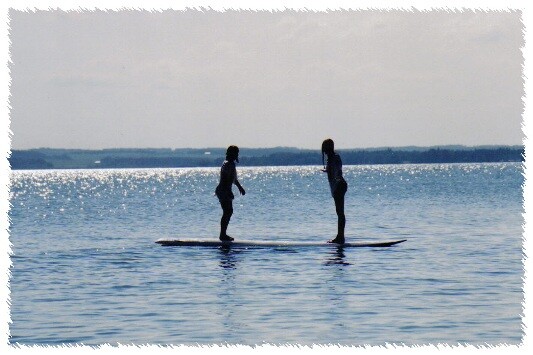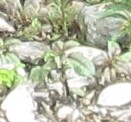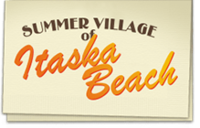What You Can Do
Help protect the lake for today and the future...

Tansy Weed Removal: All of the municipalities around Pigeon Lake created a lake-wide project to remove the Common Tansy. Please help by removing this noxious weed from your property.
Common Tansy
Tansy Ragwort
PLWMP Pamphlet. What 3 or more storm water run-off actions could you implement on your property to help slow storm water from entering the lake?

The himalayan balsam must be pulled before the end of June (after which the seeds will explode and cause further issues).
Click here for further information on noxious weeds along the shorefront.
Please note: If you leave vegetation to decompose on the shore, it activates and increases phosphorous leaks into the lake (it is in the plant material). So, if pulling Himalayan Balsam weeds, please remove them.
Reeds: For the sea weed, if you could please pile it up on shore to dry, then put it in clear bags, and it will be removed on Mondays along with your grass clippings. Same as the Himalayan Balsam weed, if left on the shoreline, not only will it smell bad, but it will increase phosphorous levels in the lake.
2. Choose simple ways to make an impact on the environment: http://www.onesimpleact.alberta.ca/
3. Contact the Pigeon Lake Watershed Association for upcoming programs, activities and policy initiatives.
4. Do NOT use fertilizers or herbicides. Fertilizer can run into the lake, adding plenty of nutrients upon which algae will grow. The Council of Itaska has been proactive in this area, and on January 16, 2008 passed a bylaw banning the use of all fertilizers. This was updated, and on June 16, 2021 passed a new bylaw restricting the use of both fertilizers and herbicides was passed.
2021-03 Restricted Use of Fertilizers and Herbicides
5. Keep the shoreline intact. Do not clear away vegetation near the lake. Instead, consider planting even more vegetation. Plants such as willows and dogwood offer very good erosion control, which prevents sediments from entering into the lake.
6. Nutrients can leak into the lake from septic systems. By maintaining and even upgrading your septic systems you can lower the amount of nutrients reaching the lake.
7. The lakeshore area may be affected through the use of poor agricultural techniques. By building partnerships with local agricultural producers and agriculture support agencies we can work together to maintain and improve the health of agricultural shorelines on prairie lakes.
8. Clean, Dry, Drain your boat!
9. Boating: what you can do to minimize the impact your motorized boat has on the environment:
10. Quading: Ride Responsibly! Shoreline areas are at greater risk of erosion than inland areas. If you are boating, drive at a “no wake” speed when approaching shore. If you are quading, avoid riding near these sensitive areas.
12. How we live, work and play in the Pigeon Lake watershed impacts the water quality. We all share the responsibility to be healthy lake stewards. Be Part of the Solution.
